How do I choose a pop up canopy?
Choosing a pop up canopy involves considering various factors to ensure it meets your specific needs and preferences. Here’s a guide to help you make an informed decision when selecting a pop up canopy:
1.Intended Use:
Determine the primary purpose of the pop up canopy. Whether it’s for recreational use, outdoor events, camping, trade shows, or commercial purposes, the intended use will influence the features you need.
2.Size:
Consider the size of the canopy based on the space you have available and the number of people or items you want to shelter. Common sizes include 8×8 feet, 10×10 feet, and larger.
3.Frame Material:
Choose a frame material that suits your preferences and needs.
Steel frames are sturdy and durable but can be heavier.
Aluminum frames are lightweight and rust-resistant.
Consider the frame’s thickness and overall construction for stability.
4.Fabric Material:
Look for a high-quality canopy fabric that is durable and provides sufficient UV protection and water resistance. Common materials include polyester and polyethylene.
5.Water Resistance:
Ensure the canopy material is water-resistant or waterproof to protect against rain and moisture. Look for features like sealed seams and water-resistant coatings.
6.UV Protection:
Opt for a canopy with UV-resistant fabric to shield against harmful ultraviolet (UV) rays. Check the UPF (Ultraviolet Protection Factor) rating of the fabric.
7.Portability:
Consider the weight and portability of the canopy, especially if you plan to transport it frequently. Look for features like a compact design, carrying bag, and handles.
8.Ease of Setup:
Choose a pop-up canopy with a user-friendly design for quick and easy setup. Look for features like telescopic legs, push-button sliders, and straightforward assembly.
9.Stability and Wind Resistance:
Consider the stability of the canopy, especially if you’ll be using it in windy conditions. Look for features like adjustable leg height, guy lines, and anchor points.
10.Ventilation:
Some canopies come with mesh panels or vents to allow airflow. Ventilation is beneficial, especially in hot weather, to prevent heat buildup inside the canopy.
11.Sidewalls and Accessories:
Decide if you need sidewalls or other accessories. Some canopies come with removable sidewalls, providing additional protection and privacy. Check if the canopy supports add-ons like weight bags, lights, or banners.
12.Durability:
Assess the overall build quality, including the strength of frame connections, quality of stitching, and durability of zippers and fasteners.
13.Customization Options:
If branding or customization is important, check if the canopy allows for personalized graphics or signage. Some canopies offer options for adding logos or banners.
14.Warranty:
Consider the manufacturer’s warranty to ensure coverage for any defects or issues. A reliable warranty reflects the confidence of the manufacturer in the product’s quality.
15.Budget:
Determine your budget for the pop up canopy. Prices can vary based on size, features, and materials. Balance your requirements with your budget to find the best value for your needs.
16.Reviews and Recommendations:
Read customer reviews and seek recommendations from others who have used the same or similar pop up canopy models. Real-world experiences can provide valuable insights into the canopy’s performance.
By carefully considering these factors and matching them with your specific requirements, you can choose a pop-up canopy that suits your needs and provides reliable shelter for various outdoor activities.
Are canopy tent safe?
Canopy tents can be safe when used according to manufacturer guidelines and appropriate safety practices. However, safety depends on various factors, including the design, materials, setup, and usage conditions. Here are some considerations to ensure the safety of canopy tents:
1.Follow Manufacturer Instructions:
Always adhere to the manufacturer’s guidelines and instructions for setup, use, and maintenance. Each canopy may have specific requirements and limitations.
2.Choose a Sturdy Design:
Select a canopy tent with a sturdy and durable design. Look for features like reinforced frames, quality connectors, and durable fabric. Consider the intended use and potential weather conditions.
3.Securely Anchor the Canopy:
Properly anchor the canopy to the ground to prevent it from being lifted by wind. Use stakes, guy lines, or sandbags to secure the legs. This is especially important in outdoor settings where wind is a factor.
4.Avoid Overloading:
Do not exceed the manufacturer’s recommended capacity or load limits. Overloading a canopy can compromise its structural integrity and pose a safety risk.
5.Monitor Weather Conditions:
Be aware of the weather conditions before setting up the canopy. Avoid using the canopy in extreme weather, such as high winds or storms. Some canopies are designed for specific weather conditions, so choose accordingly.
6.Regular Inspection and Maintenance:
Inspect the canopy regularly for any signs of wear, damage, or structural issues. Replace any damaged components promptly. Follow the maintenance guidelines provided by the manufacturer.
7.Proper Setup:
Ensure that the canopy is set up correctly according to the manufacturer’s instructions. Pay attention to the proper placement of stakes, the adjustment of legs, and the overall stability of the structure.
8.Ventilation and Fire Safety:
If using heaters or cooking equipment under the canopy, ensure proper ventilation and follow fire safety guidelines. Keep open flames away from the fabric to prevent fire hazards.
9.Consider Fire-Retardant Materials:
Some canopy fabrics are treated to be fire-retardant. If fire safety is a concern, choose a canopy with materials that comply with relevant safety standards.
10.Avoid Leaving Unattended:
Do not leave a canopy unattended, especially in windy conditions. If you need to leave, secure the canopy or take it down to prevent accidents.
11.Emergency Exits:
For larger event canopies, ensure there are clear and accessible emergency exits. Plan for quick and safe evacuation in case of an emergency.
12.Customization and Branding:
If adding signage or customization to the canopy, ensure that it doesn’t compromise the structural integrity or safety features of the tent.
13.Use Caution with Lighting:
If using lighting fixtures inside the canopy, ensure they are secured properly and not in contact with the fabric. Use appropriate and safe electrical connections.
14.Educate Users:
If the canopy is used by others, such as event attendees or employees, provide clear instructions on safe usage and behavior under the canopy.
By taking these precautions and following safety guidelines, canopy tents can be a safe and effective shelter solution for various outdoor activities. Always prioritize safety, and if any concerns arise, consult the manufacturer’s recommendations or seek professional advice.
What material are commercial tents made of?
Commercial tents, often used for events, trade shows, exhibitions, or temporary shelters, are typically made of durable materials designed to withstand frequent use and various weather conditions. The choice of material depends on factors such as durability, water resistance, UV resistance, and overall performance. Common materials for commercial tents include:
1.Polyester:
Polyester is a popular fabric for commercial tents due to its durability, water resistance, and UV resistance. It is often coated or treated to enhance its performance, making it suitable for use in various weather conditions.
2.Vinyl (PVC or Polyvinyl Chloride):
Vinyl-coated fabrics are known for their strength and waterproof properties. They are often used for the roofs and sidewalls of commercial tents. Vinyl is resistant to UV rays, making it suitable for extended outdoor use.
3.Canvas:
Canvas, typically cotton canvas, is a traditional material known for its breathability and natural aesthetic. While not as common as polyester or vinyl, canvas is still used in some commercial tents, especially for applications where a more natural or rustic look is desired.
4.Polyethylene (PE):
Polyethylene is a thermoplastic material used for tent canopies and sidewalls. It is known for its water-resistant properties and is often used in combination with other materials to create multi-layered, weather-resistant fabrics.
5.Nylon:
Nylon is lightweight and durable, making it suitable for certain types of commercial tents. It is often coated for water resistance and is commonly used in lightweight canopies or event tents.
6.Mesh Fabrics:
Mesh fabrics, often made of polyester or other synthetic materials, are used for sidewalls or sections of commercial tents to provide ventilation while keeping insects out.
7.Aluminum and Steel Frames:
The frames of commercial tents are typically made of aluminum or steel. Aluminum frames are lightweight, corrosion-resistant, and suitable for portable or semi-permanent structures. Steel frames offer additional strength and stability but may be heavier.
8.Fire-Retardant Coatings:
Many commercial tents are treated with fire-retardant coatings to enhance safety. This is particularly important for tents used in public spaces, events, or where fire safety regulations apply.
Commercial tents may feature a combination of these materials to achieve the desired balance of strength, durability, and functionality. The specific type of commercial tent and its intended use will influence the choice of materials. It’s essential to check the manufacturer’s specifications and recommendations for each tent model to understand its construction and performance characteristics.
Are there specific materials that work best for custom tents with logos to ensure a high-quality and lasting finish?
When choosing materials for custom tents with logos, it’s important to consider both the tent fabric and the printing method for achieving a high-quality and lasting finish. Here are some common materials and printing methods used for custom tents with logos:
1.Polyester Fabric:
Polyester is a popular choice for tent fabric due to its durability, water resistance, and versatility. It provides a smooth surface for printing, allowing for vibrant and detailed logo reproduction. Look for high-denier polyester for added strength.
2.Vinyl-Coated Fabrics:
Vinyl-coated fabrics, such as PVC or polyvinyl chloride, are known for their durability and weather resistance. They are suitable for outdoor use and can provide a sturdy base for logos. Vinyl-coated fabrics are often used for commercial tents with more permanent installations.
3.Canvas:
Canvas, especially cotton canvas, is chosen for a natural and textured appearance. While not as common as synthetic materials, canvas can provide a unique aesthetic for custom tents. Logos can be printed directly onto canvas or applied through other methods.
4.Dye-Sublimation Printing:
Dye-sublimation printing involves transferring dye into the fabric, resulting in a vibrant and durable finish. It is a popular choice for custom tents as it allows for full-color printing and seamless integration of logos. Dye-sublimation works well on polyester fabrics.
5.Screen Printing:
Screen printing is a traditional method where ink is applied directly to the fabric through a mesh screen. While it’s suitable for various fabrics, it works particularly well on polyester and other synthetic materials. Screen printing can achieve bold and opaque logo designs.
6.Digital Printing:
Digital printing allows for high-resolution and full-color printing directly onto the tent fabric. It’s versatile and works well on polyester fabrics. UV-curable inks are often used for outdoor durability.
7.UV-Resistant Inks:
When printing logos onto tent fabrics, using UV-resistant inks is crucial for outdoor applications. UV-resistant inks prevent fading and deterioration caused by prolonged exposure to sunlight.
8.Fire-Retardant Coatings:
If the custom tent is intended for use in public spaces or events, consider materials with fire-retardant coatings to meet safety regulations.
9.Laminated Fabrics:
Laminated fabrics have an additional layer for increased durability and weather resistance. This can enhance the longevity of logos and graphics printed on the tent.
10.Mesh Fabrics:
Mesh fabrics can be used for certain sections of the tent to provide ventilation while still allowing for logo printing. Mesh is often made from synthetic materials like polyester.
When selecting materials for custom tents with logos, it’s essential to consult with the manufacturer or printing service to ensure compatibility between the chosen fabric and the printing method. Additionally, consider the intended use, durability requirements, and the specific aesthetic you want to achieve with your custom tent.
Can outdoor tent canopies be customized for branding or personalized designs?
Outdoor tent canopy can be customized for branding or personalized designs. Customization allows businesses, organizations, or individuals to showcase their logos, messages, or unique designs on the tent canopy, creating a branded and distinctive appearance. Here are some common customization options for outdoor tent canopy:
1.Logo Printing:
Logos can be printed directly onto the tent canopy fabric. Various printing methods, such as dye-sublimation printing, digital printing, or screen printing, can be used to achieve high-quality and vibrant logo reproduction.
2.Full-Color Graphics:
Custom tent canopies can feature full-color graphics, allowing for detailed and eye-catching designs. Digital printing technology enables the reproduction of intricate patterns, images, or multi-colored logos.
3.Branding Panels:
Specific sections of the tent canopy, known as branding panels, can be designated for prominent display of logos or brand messages. These panels are strategically placed to maximize visibility.
4.Custom Colors:
Choose custom colors for the canopy fabric to match brand colors or create a specific visual theme. Many manufacturers offer a range of color options for tent canopies.
5.UV-Resistant Inks:
To ensure long-lasting and fade-resistant branding, UV-resistant inks are often used in the printing process. UV-resistant inks protect against the harmful effects of prolonged sun exposure.
6.Custom Size and Shape:
Some manufacturers offer customization options for the size and shape of the tent canopy. This allows for a tailored solution that suits the specific needs of the user.
7.Branded Sidewalls:
Sidewalls, if included in the tent setup, can also be customized with logos, slogans, or promotional messages. This provides additional opportunities for branding and visibility.
8.Custom Printed Valances:
The valances, which are the lower portions of the tent canopy, can be custom printed with logos or text. This area is often at eye level and offers a prominent branding space.
9.Double-Sided Printing:
For canopies positioned in open spaces or viewed from multiple angles, double-sided printing allows for branding visibility from both sides.
10.Customized Carrying Bags:
Carrying bags for the tent can also be customized with logos or branding. This adds a professional touch and ensures that even the storage and transport components reflect the brand identity.
11.Dye-Sublimation Printing:
Dye-sublimation printing is a versatile method that allows for high-resolution and full-color printing. It ensures that the branding on the canopy is integrated seamlessly into the fabric.
12.Mesh Panels for Branding:
In some cases, mesh panels within the tent design can be used for branding while providing ventilation. Mesh materials can still accommodate logos or promotional messages.
When considering customization for outdoor tent canopy, it’s essential to work with reputable manufacturers or printing services that specialize in creating branded tents. This ensures that the customization process meets quality standards and provides a professional representation of the brand or design.
How can I go about creating custom canopy tents for my specific event or brand?
Creating custom canopy tents for your specific event or brand involves a series of steps to ensure that the final product aligns with your requirements and branding goals. Here’s a guide to help you through the process:
1.Define Your Objectives:
Clearly outline the goals and objectives you want to achieve with the custom canopy. Identify the key messages, branding elements, and features you want to highlight.
2.Understand Your Branding:
Consider your brand identity, color scheme, and logo. Determine how these elements will be incorporated into the canopy design to enhance brand visibility.
3.Determine Size and Specifications:
Assess the space available for the canopy and define the size and specifications based on your event or promotional needs. Consider factors such as the number of people under the canopy and additional features required.
4.Choose Materials and Quality:
Select materials for both the frame and canopy fabric. Opt for high-quality materials that align with the durability and weather resistance needed for your specific events.
5.Decide on Printing and Graphics:
Determine how you want your logos, graphics, and other branding elements to be displayed on the canopy. Understand the printing options available, such as screen printing, digital printing, or custom graphics.
6.Explore Additional Features:
Consider additional features that may enhance the functionality of the canopy, such as sidewalls, windows, adjustable heights, or special framing. Choose features that align with your event requirements.
7.Research Custom Canopy Manufacturers:
Research and identify reputable custom canopy manufacturers or suppliers. Look for companies with experience in producing high-quality, customized canopies and positive customer reviews.
8.Request Quotes and Samples:
Reach out to selected manufacturers and request price quotes based on your specifications. Additionally, inquire about the possibility of receiving samples or mock-ups to assess the quality and appearance of the custom canopy.
9.Review Design and Specifications:
Work closely with the manufacturer to finalize the design and specifications. Confirm details such as color accuracy, printing resolution, and any customization features.
10.Place Your Order:
Once satisfied with the design, specifications, and pricing, place your order with the chosen manufacturer. Ensure that you have a clear understanding of the production timeline and any minimum order quantities.
11.Coordinate Logistics:
Coordinate logistics for the delivery or pickup of the custom canopy. Provide any necessary information regarding event dates, locations, or specific delivery instructions.
12.Set Up and Test:
Prior to the event, set up and test the custom canopy to ensure that it meets your expectations and functions as intended. Familiarize yourself with the assembly process for efficient setup during the event.
By following these steps, you can create custom canopy tents tailored to your specific event or brand, effectively promoting your message and enhancing brand visibility during outdoor activities, trade shows, or promotional events.
What is the recommended setup process for canopies with sides, and are they easy to assemble?
The setup process for canopies with sides is generally straightforward, but it may vary slightly depending on the specific design and brand. Here is a recommended general setup process for canopy with sides, along with tips to ensure ease of assembly:
1.Setup Process:
Choose a Suitable Location:
Select a flat and level surface for setting up the canopy. Clear any debris or obstacles from the area.
Lay Out the Canopy Components:
Lay out all the components of the canopy, including the frame, canopy top, sidewalls, stakes or anchors, and any additional accessories.
Assemble the Frame:
Begin by assembling the frame according to the manufacturer’s instructions. Most pop-up canopies have a collapsible frame that unfolds and locks into place. Ensure that all frame components are securely connected.
Attach the Canopy Top:
If the canopy has a separate top, attach it to the frame according to the provided instructions. This may involve securing the top to the frame using hook and loop fasteners, snaps, or other attachment mechanisms.
Secure the Canopy:
Once the canopy top is in place, secure it to the frame using any provided straps or fasteners. This step ensures that the canopy remains taut and stable during use.
Attach the Sidewalls:
If your canopy includes sidewalls, attach them to the frame. Sidewalls are typically secured by zippers, Velcro, or other fasteners. Begin with the corners and then secure along the sides.
Secure the Canopy to the Ground:
Use stakes, anchors, or weights to secure the canopy to the ground. This step is crucial for stability, especially in windy conditions. Follow the manufacturer’s recommendations for the anchoring system.
Adjust Height and Position:
Adjust the height of the canopy if it has an adjustable feature. Ensure that the canopy is positioned securely and evenly on the ground.
Check Stability and Tension:
Walk around the canopy and check for stability. Ensure that all components are properly tensioned, and make any necessary adjustments to ensure the canopy is secure.
2.Tips for Easy Assembly:
Read the Instructions: Always refer to the manufacturer’s instructions provided with the canopy. Each canopy may have unique features and assembly requirements.
Practice Before the Event: If possible, practice setting up the canopy in a controlled environment before the actual event. This helps familiarize you with the process and ensures a smoother setup on the day of the event.
Use Two People: While it’s possible to set up most canopies with one person, having an extra pair of hands can make the process quicker and more efficient, especially when dealing with larger canopies.
Store Components Together: Keep all canopy components, including frame, canopy top, sidewalls, and accessories, together during storage to streamline the setup process.
By following these steps and tips, you can ensure an efficient and easy setup process for canopy with sides. Familiarity with the specific features of your canopy and practicing the setup in advance will contribute to a successful and hassle-free experience during events.
What customization options are available for adding a logo to a tent, and can it be done in multiple locations?
Customizing a tent with a logo offers various options for placement and design. The specific customization options may vary depending on the tent manufacturer, but here are common customization features for adding logos to tents:
1.Logo Printing:
Logos can be printed directly onto the tent canopy fabric using various printing methods, such as dye-sublimation printing, digital printing, or screen printing. Printing allows for full-color reproduction of logos and graphics.
2.Valance Printing:
The valance, which is the lower portion of the tent canopy, is often used for logo placement. Logos can be printed along the valance, providing a visible and prominent branding space. Valance printing is common in outdoor event tents.
3.Peak Printing:
Logos can be printed on the peak or top portion of the tent canopy. This can be a central and eye-catching location for branding. The peak area is visible from a distance and provides a focal point for the logo.
4.Branding Panels:
Some tents are designed with specific branding panels where logos are prominently displayed. These panels are strategically placed for maximum visibility. It ensures that the logo is showcased effectively.
5.Sidewall Printing:
If the tent includes sidewalls, logos can be printed on these vertical panels. Sidewalls provide additional branding opportunities and can be customized with logos, slogans, or promotional messages.
6.Double-Sided Printing:
For tents positioned in open spaces or viewed from multiple angles, double-sided printing allows logos to be visible from both sides of the canopy. This is particularly useful for tents placed in the center of an event space.
7.Mesh Panels for Branding:
Tents with mesh panels can include branding within these sections. Mesh materials allow for ventilation while still accommodating logos or promotional graphics.
8.Custom Colors:
Customize the color of the canopy fabric to match brand colors or create a specific visual theme. This can be done in conjunction with logo printing for a cohesive and branded appearance.
9.Customized Carrying Bags:
Carrying bags for the tent can also be customized with logos or branding. This adds a professional touch and ensures that even the storage and transport components reflect the brand identity.
10.Multiple Locations:
Many manufacturers offer the flexibility to add logos to multiple locations on the tent. This could include combinations of valance printing, peak printing, sidewall printing, and branding panels. Multiple logo placements enhance visibility.
11.Dye-Sublimation Printing:
Dye-sublimation printing is a versatile method that allows for high-resolution and full-color printing. It ensures that the branding on the tent is integrated seamlessly into the fabric.
When customizing a tent with logos, it’s essential to work with a reputable manufacturer or printing service that offers quality printing and customization options. Discussing your specific preferences and requirements with the manufacturer will help ensure that the logo placement and design align with your branding goals.
What features should I look for when selecting a white canopy tent for a clean and elegant appearance?
Selecting a white canopy tent for a clean and elegant appearance involves considering various features that contribute to the overall aesthetics and functionality of the tent. Here are key features to look for when choosing a white canopy tent:
1.Quality Material:
Choose a canopy tent made from high-quality materials, such as durable polyester or vinyl-coated fabrics. The material should be resistant to fading and stains to maintain a clean appearance over time.
2.Water-Resistant or Waterproof Fabric:
Opt for a white canopy tent with water-resistant or waterproof fabric to ensure protection during light rain or drizzle. Waterproof materials are particularly important for maintaining a pristine appearance during unpredictable weather conditions.
3.UV-Resistant Fabric:
UV-resistant fabric helps prevent the white color from fading due to exposure to sunlight. This feature is essential for maintaining the tent’s clean and elegant appearance over extended outdoor use.
4.Sturdy Frame Construction:
The frame of the canopy should be sturdy and durable, providing stability and support. Look for materials like aluminum or steel, and consider features like reinforced joints and connectors for added strength.
5.Powder-Coated Frame Finish:
A white canopy with a powder-coated frame finish enhances durability and contributes to a polished appearance. Powder coating provides a smooth and even finish that complements the clean aesthetic.
6.Easy Setup Mechanism:
Choose a canopy tent with an easy and efficient setup mechanism. Features like telescopic legs, push-button sliders, and a straightforward assembly process contribute to a hassle-free setup and enhance the overall user experience.
7.Adjustable Leg Heights:
Adjustable leg heights allow you to customize the tent’s height according to your needs. This flexibility ensures that the tent looks proportionate and can accommodate various event setups.
8.Clean Lines and Sleek Design:
Look for a canopy tent with clean lines and a sleek design. Minimalist aesthetics contribute to an elegant appearance, making the tent suitable for various events, including weddings, parties, or formal gatherings.
9.Integrated Ventilation:
Some canopy tents come with integrated ventilation features, such as mesh panels or vents. Ventilation helps maintain a comfortable environment inside the tent and prevents heat buildup, contributing to an elegant experience for users.
10.High-Peak Design:
A high-peak design adds a touch of elegance to the canopy, creating a more visually appealing structure. High peaks not only enhance the aesthetic but also provide better rain runoff.
11.Quality Zippers and Fasteners:
Ensure that the zippers and other fasteners are of high quality and durable. Smooth operation and reliable fastening contribute to the overall functionality and appearance of the tent.
12.Customization Options:
Check if the white canopy tent offers customization options, such as the ability to add logos, banners, or sidewalls for a personalized touch. Customization can elevate the tent’s appearance for branding or event-specific needs.
13.Carry Bag with Handles:
A convenient carry bag with handles ensures that the tent can be transported and stored with ease. A well-designed bag adds to the overall convenience and maintains the tent’s cleanliness during storage.
14.Warranty and Customer Reviews:
Consider the warranty provided by the manufacturer and read customer reviews to ensure that the white canopy tent meets expectations for both appearance and performance.
By paying attention to these features, you can select a white canopy tent that not only looks clean and elegant but also provides reliable functionality for your specific events or gatherings.




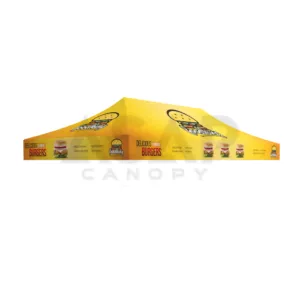
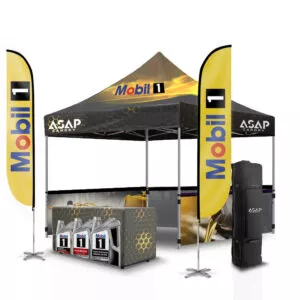


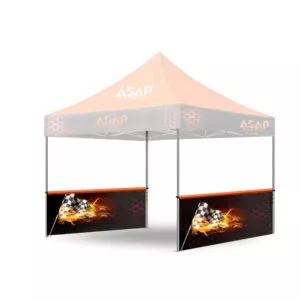
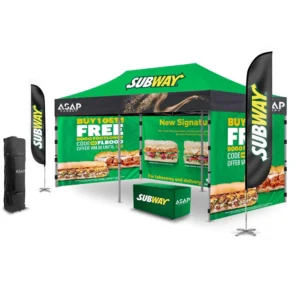

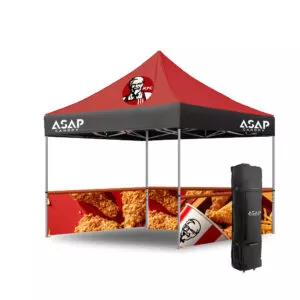
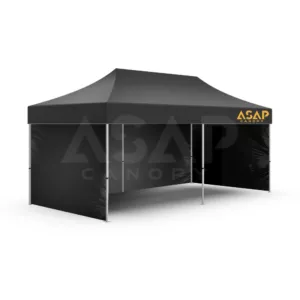



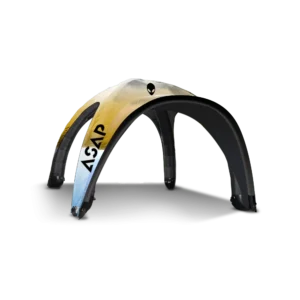

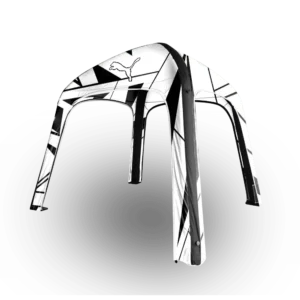



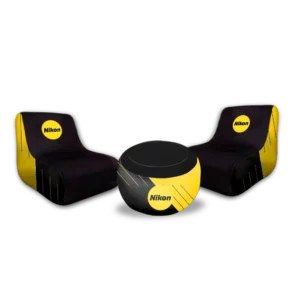




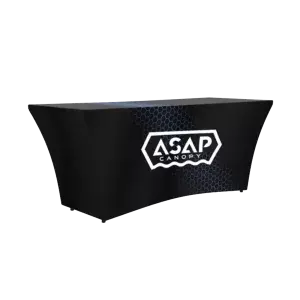

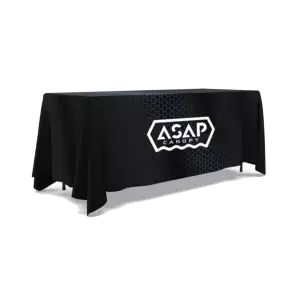





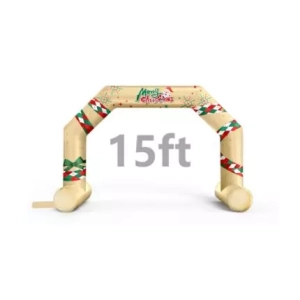





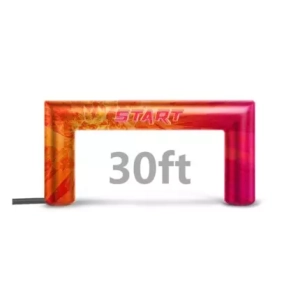





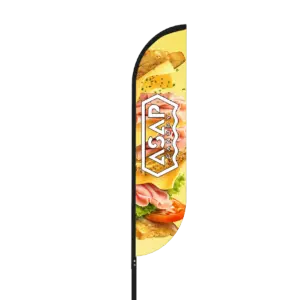


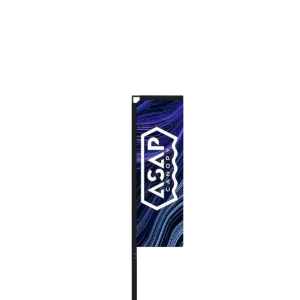

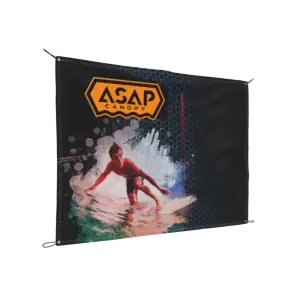
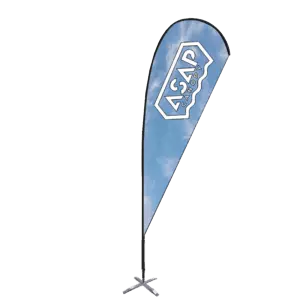

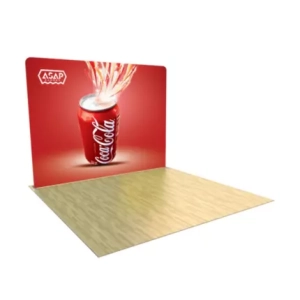

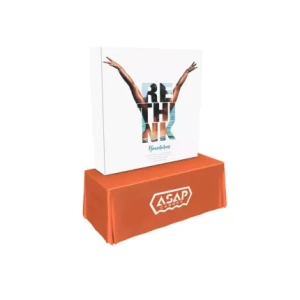
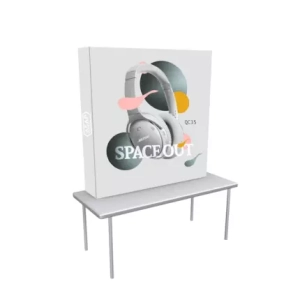
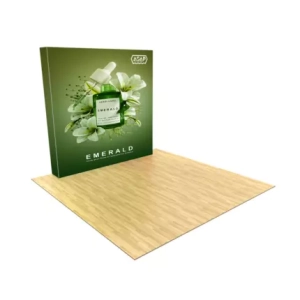


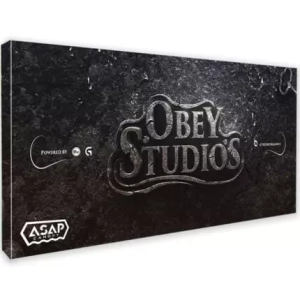
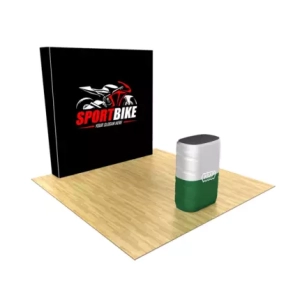


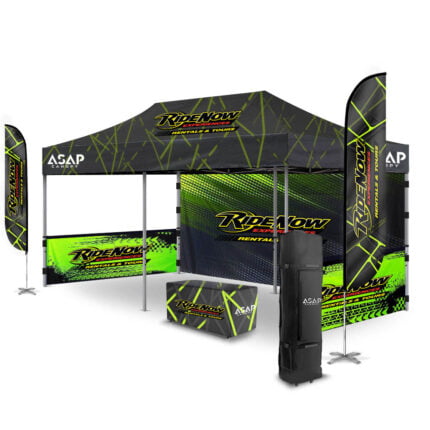





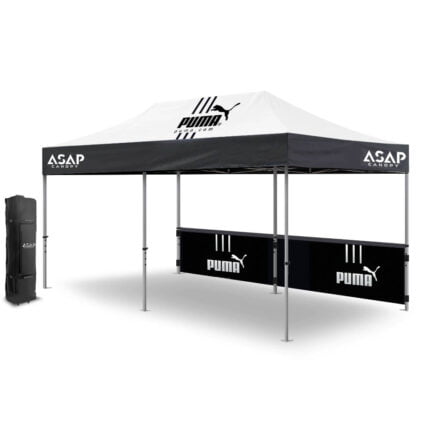


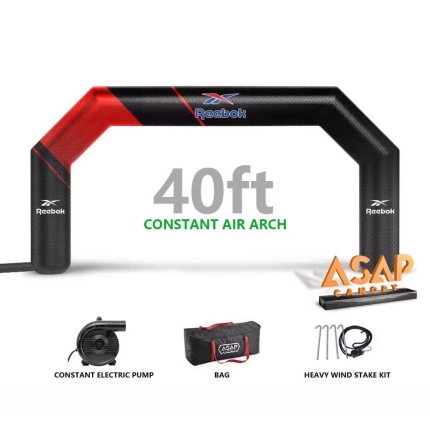

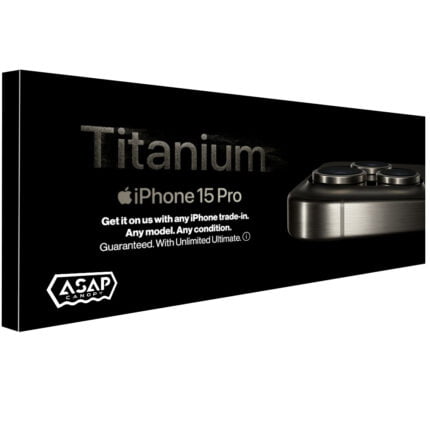


 5×5 Pop Up Tent
5×5 Pop Up Tent 6.5×6.5 Pop Up Tent
6.5×6.5 Pop Up Tent 10×10 Canopy Tent
10×10 Canopy Tent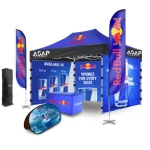 10×15 Canopy Tent
10×15 Canopy Tent 10×20 Canopy Tent
10×20 Canopy Tent Canopy Options
Canopy Options Blank Canopy Top
Blank Canopy Top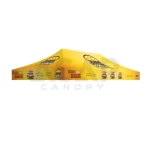 Canopy Top
Canopy Top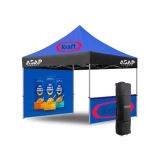 Canopy Walls
Canopy Walls Canopy Side Skirt
Canopy Side Skirt Blank Canopy
Blank Canopy Blank Canopy Kit
Blank Canopy Kit
 Inflatable Canopy Tents 10×10
Inflatable Canopy Tents 10×10 Inflatable Canopy Tents 13×13
Inflatable Canopy Tents 13×13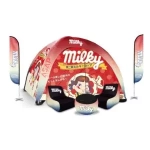 Inflatable Canopy Tents 16×16
Inflatable Canopy Tents 16×16 Inflatable Canopy Tents 20×20
Inflatable Canopy Tents 20×20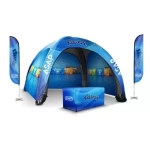 Inflatable Canopy Tents 23×23
Inflatable Canopy Tents 23×23 Inflatable Canopy Tents 26×26
Inflatable Canopy Tents 26×26 Inflatable Spider Tents
Inflatable Spider Tents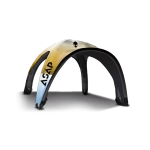 Inflatable Dome Tents
Inflatable Dome Tents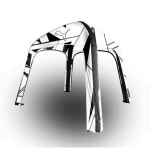 Inflatable Eclipse Tents
Inflatable Eclipse Tents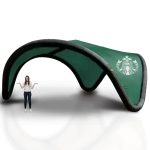 Inflatable Party Tent
Inflatable Party Tent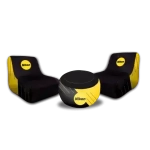 Inflatable Furniture
Inflatable Furniture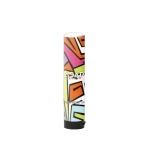 Inflatable Pillar
Inflatable Pillar
 Single Pole Star Tents
Single Pole Star Tents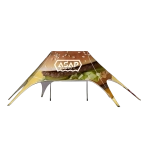 Double Pole Star Tents
Double Pole Star Tents
 15FT Inflatable Arches
15FT Inflatable Arches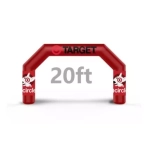 20FT Inflatable Arches
20FT Inflatable Arches 25FT Inflatable Arches
25FT Inflatable Arches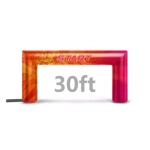 30FT Inflatable Arches
30FT Inflatable Arches 40FT Inflatable Arches
40FT Inflatable Arches 50FT Inflatable Arches
50FT Inflatable Arches Custom Constant Arches
Custom Constant Arches Custom Sealed Arches
Custom Sealed Arches
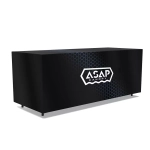 Fitted Table Covers
Fitted Table Covers Stretch-Fit Table Covers
Stretch-Fit Table Covers Loose Table Throws
Loose Table Throws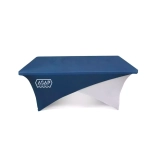 Cross-Over Stretch-Fit Table Cover
Cross-Over Stretch-Fit Table Cover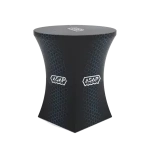 Round Stretch-Fit Table Cover
Round Stretch-Fit Table Cover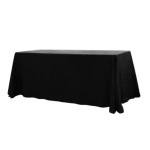 Blank Table Throws
Blank Table Throws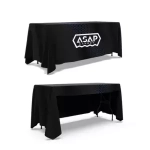 3-Sided Loose Table Throw
3-Sided Loose Table Throw Round Fitted Table Covers
Round Fitted Table Covers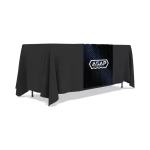 Table Runners
Table Runners Square Table Covers
Square Table Covers
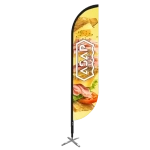 Feather Flags
Feather Flags Blade Flags
Blade Flags Feather Banner
Feather Banner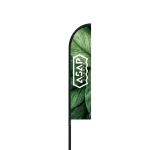 Blade Banner
Blade Banner Teardrop Flags
Teardrop Flags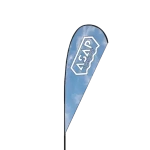 Teardrop Banner
Teardrop Banner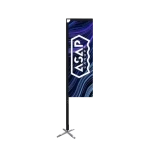 Rectangle Flags
Rectangle Flags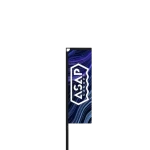 Rectangle Banner
Rectangle Banner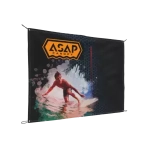 Mesh Event Banners
Mesh Event Banners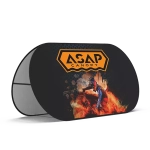 Pop Out Banner Horizontal
Pop Out Banner Horizontal Pop-Out Banner Vertical
Pop-Out Banner Vertical
 Trade Show Display
Trade Show Display Trade Show Display Kit
Trade Show Display Kit Pop Up Trade Show Display
Pop Up Trade Show Display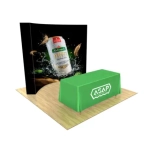 Pop Up Trade Show Display Deluxe Kit
Pop Up Trade Show Display Deluxe Kit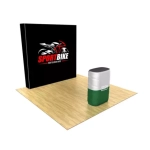 Pop Up Trade Show Display Kit
Pop Up Trade Show Display Kit TableTop Displays Kit
TableTop Displays Kit Pop Up Tabletop Display Kit
Pop Up Tabletop Display Kit Pop Up Tabletop Display
Pop Up Tabletop Display Tabletop Display
Tabletop Display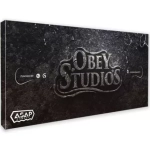 Straight Trade Show Exhibit Booth
Straight Trade Show Exhibit Booth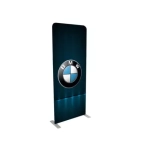 Banner Stand
Banner Stand
 Tent Accessories
Tent Accessories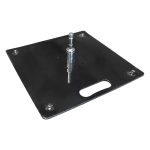 Flag Accessories
Flag Accessories Arch Accessories
Arch Accessories Trade Show Accessories
Trade Show Accessories
